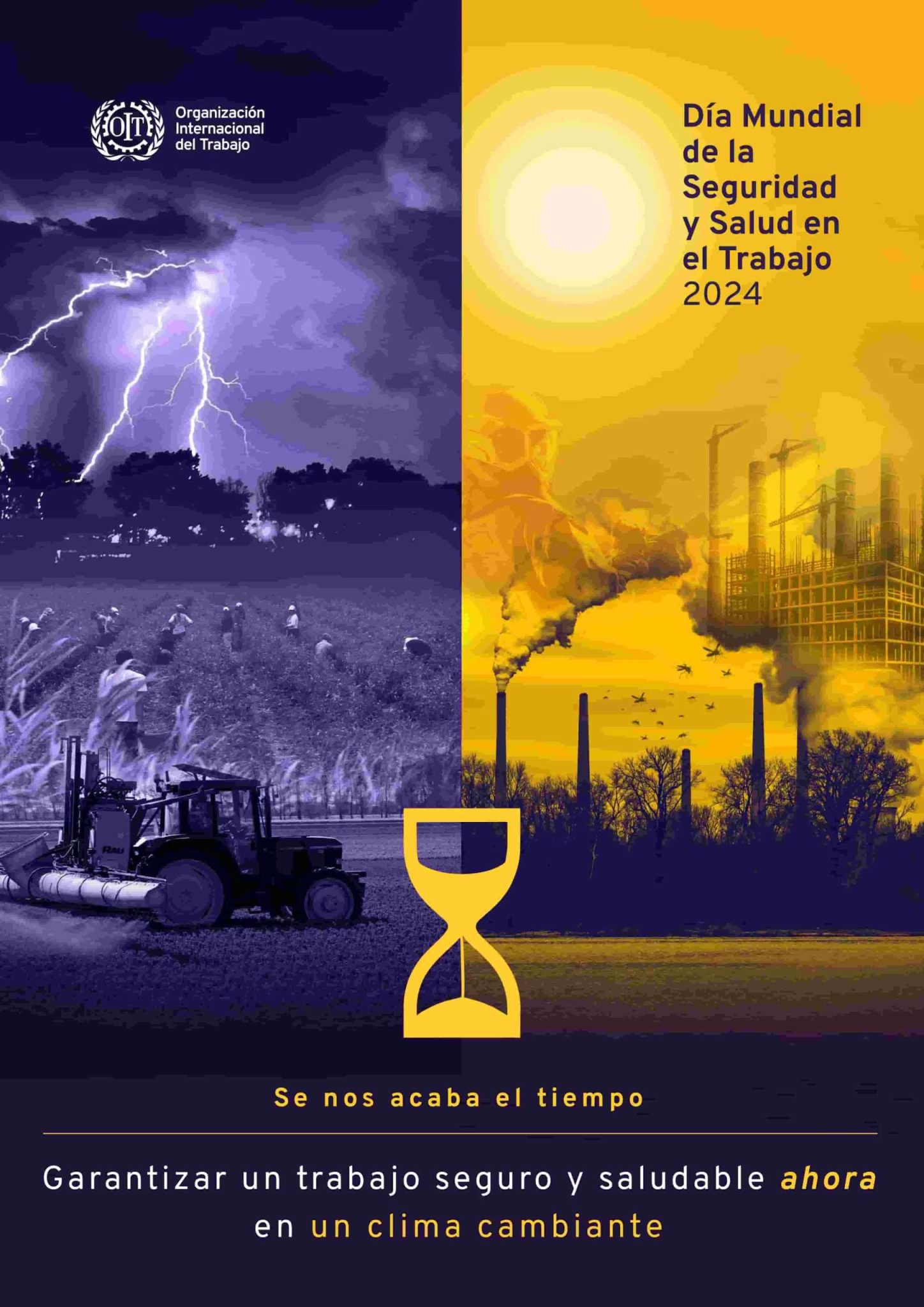What is the Coordination of Business Activities (CAE)?
Business Activities Coordination (CAE) is a process of collaboration and cooperation between companies operating in the same workplace, with the aim of guaranteeing the health and safety of the workers involved in these activities.
The coordination process involves communication and information exchange between the companies involved, in order to identify existing occupational risks, assess them and establish appropriate preventive and protective measures.
In order to establish the minimum provisions that the different employers who coincide in the same workplace must put into practice to prevent occupational hazards arising from the concurrence of business activities and, therefore, to ensure that this concurrence does not affect the health and safety of workers of the concurrent companies, the following is published in 2004 Royal Decree 171The European Parliament and the Council, developing the Article 24 of Law 31/1995The Spanish Health and Safety at Work Act (Prevención de Riesgos Laborales), on the coordination of business activities.
For the purposes of the provisions of this Royal Decree, the following definitions shall apply:
a) Workplace: any area, whether built-up or not, in which workers are required to remain or to which they have access by reason of their work.
(b) Employer owning the establishment: the person who has the capacity to make available and manage the workplace.
(c) Principal employer: an employer who contracts or subcontracts with others for the performance of works or services corresponding to his own activity and which are carried out at his own place of work.

Who must carry out the Coordination of Business Activities?
In Spain, the responsibility of carrying out the coordination of business activities (CAE) is the responsibility of all employers who have male and female workers in the same workplace or shared environment. The Law on the Prevention of Occupational Risks establishes that it is the obligation of all companies involved in concurrent activities to ensure that there is adequate coordination to guarantee the health and safety of workers.
In this sense, all competing undertakings have a responsibility to participate in the coordination process, exchanging relevant information, assessing occupational risks and establishing appropriate preventive measures. Coordination can be carried out by the main employer, who is the one who has the ability to control the workplace, and who hires other companies to carry out certain tasks. However, all competing companies have an obligation to actively collaborate in coordination, regardless of whether they are the principal employer or a contractor company.
Objectives of the CAE
Coordination of business activities for the prevention of occupational risks shall ensure that the following objectives are met:
(a) Consistent and responsible application of the principles of preventive action set out in the Article 15 of Law 31/1995 of 8 November 1995, Prevention of Occupational Risks, by the concurrent companies in the work centre.
(b) The correct application of working methods by competing undertakings in the workplace.
c) The control of the interactions of the different activities carried out in the workplace, in particular where they may give rise to risks classified as serious or very serious or where activities are carried out in the workplace which are incompatible with each other in terms of their impact on the safety and health of workers.
d) The appropriateness of the risks in the workplace which may affect workers of the competing undertakings and the measures implemented for their prevention.
When workers from two or more companies carry out activities in the same workplace, they must cooperate in the application of occupational risk prevention regulations. The duty to cooperate shall apply to all companies and self-employed workers concurrent in the workplace, whether or not there are legal relationships between them.
These companies must inform each other of the specific risks of the activities they carry out in the workplace that may affect the workers of the other companies operating in the workplace, in particular those that may be aggravated or modified by circumstances arising from the concurrence of activities.
The information shall be sufficient and shall be provided before the start of activities, when there is a change in concurrent activities relevant for preventive purposes and when an emergency situation has arisen.
The information shall be provided in writing when any of the undertakings generate risks classified as serious or very serious.
When, as a result of the risks of concurrent activities, an accident at work occurs, the employer shall inform the other employers present at the workplace of the accident.
Each employer must inform their respective workers of the risks arising from the concurrence of business activities in the same workplace.

Actions to be taken by the Owner-Entrepreneur
In addition to complying with the above, the incumbent employer shall also take the following measures:
Information on the owner-entrepreneur
- The holder employer shall inform the other competing employers of the risks specific to the workplace which may affect the activities carried out by them, the measures concerning the prevention of such risks and the emergency measures to be applied.
- The information shall be sufficient and shall be provided prior to the start of activities and when there is a change in the workplace's own risks that is relevant for preventive purposes.
- The information shall be provided in writing when the risks specific to the workplace are classified as serious or very serious.
Instructions from the Owner Employer
- Once the aforementioned information has been received (on the specific risks of the activities carried out in the workplace that may affect the workers of the other employers in the workplace, in particular those that may be aggravated or modified by circumstances derived from the concurrence of activities), the employer owning the workplace, when its workers carry out activities there, shall give the other employers in the workplace instructions for the prevention of the risks existing in the workplace that may affect the workers of the concurrent companies and on the measures to be applied when an emergency situation arises.
- The instructions shall be sufficient and appropriate to the risks existing in the workplace which may affect workers of competing undertakings and to the measures to prevent such risks.
- The instructions shall be provided before the start of activities and when there is a change in the risks existing in the workplace that may affect workers of the concurrent undertakings and which is relevant for preventive purposes.
- The instructions shall be given in writing when the risks existing in the workplace which may affect workers of concurrent undertakings are classified as serious or very serious.
Actions to be taken by Concurrent Entrepreneurs
- Employers carrying out activities in a workplace owned by another employer shall take into account the information received from the latter in the risk assessment and in the planning of their preventive activity as referred to in Article 16 of Law 31/1995of 8 November, on the Prevention of Occupational Risks.
- The instructions given by the employer in charge of the workplace must be complied with by the other employers in attendance.
- Concurrent employers shall communicate to their respective employees the information and instructions received from the employer owning the establishment under the terms provided for in the Article 18.1 of Law 31/.1995of 8 November, of Prevention of Occupational Risks.
- The measures referred to in the previous paragraphs shall apply to all companies and self-employed workers carrying out activities at the workplace, whether or not there is a legal relationship between the titular employer and them.
Duty of care of the Principal
- The principal employer, in addition to complying with the measures set out above, must monitor compliance with occupational risk prevention regulations by contractors or subcontractors for works and services corresponding to its own activity and which are carried out in its own work centre.
- Prior to the commencement of the activity at his place of work, the principal employer shall require contractors and subcontractors to certify in writing that they have carried out, for the works and services contracted, the risk assessment and the planning of their preventive activity. Likewise, the principal employer shall require such companies to certify in writing that they have fulfilled their obligations in terms of information and training with regard to the workers who are to provide their services at the workplace. The accreditations foreseen in the previous paragraphs must be required by the contractor company, to be handed over to the main employer, when it subcontracts the execution of part of the work or service to another company.
- The principal employer shall check that the necessary means of coordination have been established between the contractors and subcontractors operating at his worksite.
Non-exhaustive list of Means of Coordination
- The exchange of information and communications between the competing companies.
- The celebration regular meetings between the competing companies.
- Joint meetings of the health and safety committees of the concurrent companies or, failing that, of the employers who do not have such committees with the prevention delegates.
- The issuing of instructions.
- The joint establishment of specific measures for the prevention of existing risks in the workplace that may affect the workers of the concurrent companies or of procedures or protocols for action.
- The presence in the workplace of the preventive resources of the concurrent companies.
- The designation of one or more persons in charge of the coordination of preventive activities.
Determination of the Means of Coordination
After the exchange of information and before the start of the activities, the concurrent employers at the workplace shall establish the means of coordination they consider necessary and relevant for the fulfilment of the objectives set out in this Royal Decree. The initiative for the establishment of the means of coordination shall lie with the employer owning the workplace whose workers carry out activities there or, failing that, with the principal employer.
Each employer shall inform their respective employees about the means of coordination in place. under the terms provided for in the Article 18.1 of Law 31/1995 of 8 November 1995, Prevention of Occupational Risks. When the means of coordination established are the presence of preventive resources in the workplace or the designation of one or more persons in charge of the coordination of business activities, the workers shall be provided with the necessary data to enable them to identify them.
The designation of one or more persons in charge of the coordination of preventive activities. shall be considered as a preferred means of coordination when two or more of the following conditions are met:
- When one of the concurrent companies carries out activities or processes in the workplace that are considered to be dangerous or involve special risks, which may affect the health and safety of the workers of the other companies present.
-
When there is particular difficulty in controlling the interactions of the different activities carried out in the workplace that may generate risks classified as serious or very serious.
-
When there is particular difficulty in preventing the carrying out of activities in the workplace that are incompatible with each other from the point of view of the safety and health of workers, either successively or simultaneously.
-
When there is a special complexity for the coordination of preventive activities as a result of the number of concurrent companies and workers, the type of activities carried out and the characteristics of the work centre. When there are justified technical or organisational reasons, the designation of one or more persons in charge of preventive activities may be replaced by any other means of coordination that guarantee compliance with the objectives of this RD.
In accordance with the provisions of the Article 13.3 RD 171/2004The person or persons in charge of the coordination of preventive activities shall be designated by the employer owning the workplace whose workers carry out activities there.
They may be responsible for the coordination of preventive activities the following persons:
- One or more of the workers designated to carry out the preventive activities by the employer owning the workplace or by the other concurrent employers, in accordance with the Article 30 of Law 31/1995, and with the Article 12 of Royal Decree 39/1997.
-
One or more members of the prevention service of the company owning the workplace or of the other concurrent companies.
-
One or more members of the external prevention service provided by the company owning the workplace or by the other concurrent companies.
-
One or more workers from the undertaking owning the establishment or from the other concurrent undertakings who, without being part of its own prevention service or being designated workers, have the necessary knowledge, qualifications and experience in the activities referred to in paragraph 1.
-
Any other worker of the company owning the establishment who, by virtue of their position in the hierarchical structure of the company and the technical functions they perform in relation to the production process or processes carried out in the establishment, is qualified for the coordination of business activities.
-
One or more persons from companies involved in the coordination of preventive activities, who have the necessary skills, knowledge and qualifications in the activities referred to in paragraph 1.
The person(s) in charge of the coordination of preventive activities must have the corresponding preventive training.The person or persons in charge of the coordination of preventive activities shall, as a minimum, be responsible for the functions of the intermediate level, in accordance with article 14.4 RD 171/2004.2.13. In any case, the person or persons in charge of the coordination of preventive activities must maintain the necessary collaboration with the preventive resources of the concurrent employers, in accordance with the last paragraph of article 13.3 RD 171/2004.
The person(s) in charge of the coordination of preventive activities shall have the following functions:
- To promote the fulfilment of the objectives set out in the Article 3 RD 171/2004.
- To serve as a channel for the exchange of information which, by virtue of the provisions of this Royal Decree, must be exchanged between the companies operating in the workplace.
-
Any other tasks entrusted by the employer in charge of the workplace.

Application of the Royal Decree in Construction Works
Works falling within the scope of the Royal Decree 1627/1997 of 24 October 1997, which establishes minimum health and safety provisions in construction works, shall be governed by the provisions of the aforementioned royal decree. For the purposes of the provisions of this Royal Decree, the following shall be taken into account:
- The information that corresponds to the titular companyshall be deemed to be fulfilled by the promoter by means of the health and safety study or the basic study, in the terms established in articles 5 and 6 of Royal Decree 1627/1997, of 24 October. The instructions of the owner company will be understood to be complied with by the developer through those given by the health and safety coordinator during the execution of the work, when such a figure exists; otherwise, they will be given by the project management.
- The measures established for the principal entrepreneur, correspond to the contractor defined in the Article 2.1.h of Royal Decree 1627/1997 of 24 October 1997.
- The means of coordination in the construction sector shall be as set out in Royal Decree 1627/1997 of 24 October 1997and in the fourteenth additional provision of the Law 31/1995 of 8 November 1995The company shall be responsible for the prevention of occupational hazards, as well as any other complementary measures that may be established by the companies involved in the work.
In the Guía de Actuación Inspectora en la coordinación de Actividades Empresariales de la Dirección General de la Inspección de Trabajo y Seguridad Social, it is mentioned:
Prior to the commencement of the activity at his place of work, the principal employer shall require contractors and subcontractors to provide written proof that they have carried out, for the works and services contracted, the risk assessment and the planning of their preventive activity, in accordance with the Article 10.2 RD 171/2004.
Likewise, the principal employer shall require such undertakings to provide written proof that they have fulfilled their information and training obligations in respect of the workers who are to provide services at the workplace, as provided for in the Article 10.2 RD 171/2004.
When the contractor company decides to subcontract part of the work or service entrusted, it shall require in writing that the said subcontractor accredits having carried out the risk assessment and preventive planning for the contracted works and services, as well as compliance with the obligations regarding information and training of the workers who will provide services at the work centre. The principal employer shall hand over these accreditations to the principal employer, in accordance with the last paragraph of the Article 10.2 RD 171/2004.
The principal employer shall check that the contractor and subcontractor undertakings competing at its worksite have established the necessary means of coordination between them.
The principal employer must monitor compliance with occupational risk prevention regulations by contractors or subcontractors of works and services corresponding to its own activity, and which are carried out in its own work centre.
CAE platforms
There are various technological platforms (software) for validate, maintain and efficiently manage all the documentation required to carry out the Coordination of Business Activities, linking documents to each other and facilitating the transmission and exchange of documents between the main company and third parties (contractors, subcontractors, suppliers, etc.).
The aim of these softwares is to provide a single meeting point for partner companies, to streamline the exchange of documents, eliminate paper documents and e-mails, and integrate processes between partner companies.
The use of a document management software platform for the CAE helps to optimise processes, reduce errors and ensure compliance with regulations on the coordination of business activities.
The Quioo platform of Q-safety by Quirónprevención is a comprehensive solution for Efficient Document Management, which is also integrated with Quirónprevención's external prevention service and endorsed by the Quirónsalud Group.



